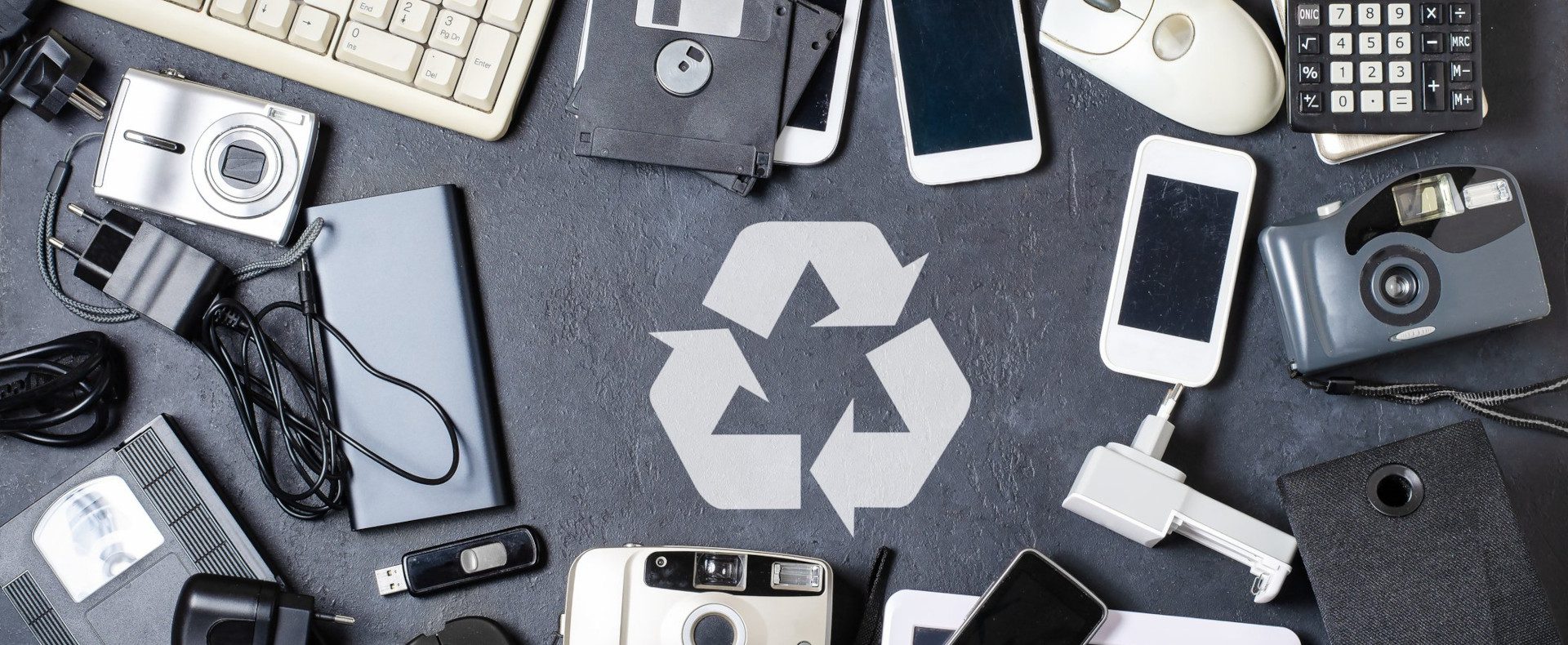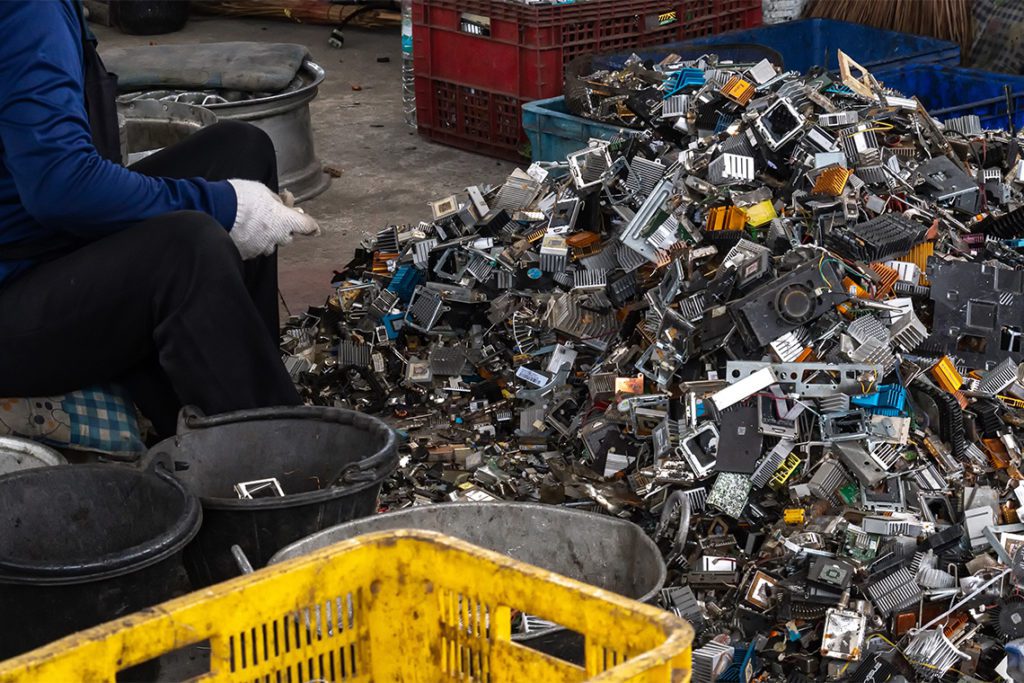- 12 Month Warranty
- Free Delivery
- Quality Guaranteed
- 30 Day Returns
- Customer Service
Menu

If you’ve got broken or unused electronics sitting in a junk drawer at home, you’re not on your own. The UK is one of the biggest producers of electronic waste, or e-waste, in the world and we’re only producing more. It’s a problem because when electronics get thrown away or ‘recycled’, they can cause harm to the environment as well as humans, including children.
But there are things that all of us can do to combat the e-waste problem. We can use our electronics, including phones, tablets and smart watches, for longer, then recycle them properly when they’ve reached the end of their lives. And we can also buy refurbished to help stop creating e-waste in the first place!
E-waste is a problem because it can cause harm to people and the environment when it’s not disposed of correctly. When you put your broken or unwanted phone or tablet in the bin, it will go to landfill. These electronics can leach toxic substances like lead and mercury into the soil and water, which will affect plant growth and wildlife, and possibly human life too.

Electronics also contain valuable elements like gold, silver and copper, which are non-renewable. By sending them to landfill without recycling, we throw away these precious materials.
Another side to the e-waste problem is that lots of people leave old electronics, like mobile phones, in a drawer at home, ‘just in case.’ Usually, these phones go unused the entire time and end up being thrown away during a clear-out. If the device had been sent off to a recycling facility when it first stopped being used, it could have been refurbished and given a new lease of life.
There are lots of recycling solutions available for electronics – but unfortunately a lot of these are simply taking the problem away from us to other countries.
According to the World Health Organisation, a lot of e-waste is exported from high-income countries to low- and middle-income countries, where there may be a lack of or poorly-enforced regulation. This leads to e-waste workers, who dismantle, recycle and refurbish electronic components, being at risk of adverse health effects.
In a lot of these cases, children are sorting through e-waste.
Adults and children that sort through e-waste are at risk of changes in lung function, breathing difficulties and chronic diseases later in life – such as cancer and heart disease.
Expectant mothers that are exposed to toxic e-waste are at risk of stillbirth or premature births. There is also research to suggest that exposure to lead from e-waste recycling activities can lead to reduced neurological assessment scores in newborns, as well as increased rates of ADHD, behavioural problems and reduced cognitive and language scores.
It’s imperative that we keep our e-waste in the UK and find better ways of recycling it and giving electronics a new lease of life before they get broken up. One of the ways of doing that is by buying refurbished from places like Ultimo Electronics!
If you’re wondering what to do with your unwanted or broken electronics, there are a few steps you can take to reduce your e-waste impact and keep it out of landfill.
Try to postpone upgrading your phone or other electronics for as long as you can. Is it really necessary for you to get a new device for work? Do you really need the latest phone to communicate with friends and family?
If you have decided to upgrade your phone, tablet or watch and it’s still in working order or only needs some small repairs, you could give it to someone else. If you don’t know anyone that will want it, you can give it to charity or send it to a retailer who will refurbish it and may even give you credit for a new device.
At Ultimo Electronics, this is something we’re working on – we hope that soon, we’ll be able to take in your old devices and recycle or refurbish them.
If you really can’t reuse your device, find a trustworthy local recycling facility. Unfortunately, there is no way to know whether your device will be exported to another country, so it’s always best to try to reuse the item or send it away to be refurbished. You can use the recycling locator at Recycle Now to find your closest electrical recycling centre.
One of the best things you can do to reduce your e-waste impact is buy refurbished electronics. At Ultimo Electronics, we give thousands of devices a new lease of life every year by testing and repairing them.
By buying refurbished, you’re ensuring that these electronics are used until their very last moment and stop them from going to landfill. When you are ready to upgrade your refurbished device, make sure it’s recycled properly to reduce your impact on the environment.
All our devices are fully tested with a 35-point check, repaired if necessary and are ensured that they have at least 70% battery health. Plus, we offer a 12-month warranty as standard. Find out more about our refurbished process on our blog.
So, next time you’re thinking about an upgrade, consider:
Image credits: ToRy UK and Andrey Mitrofanov
Call us on 01508 500 242
Email us at [email protected]
10am to 4pm Monday to Friday
Ultimo Electronics Limited,
Unit B Vulcan Road North Norwich
Norfolk, NR6 6AQ.
Registered Name: Ultimo Electronics Limited
Registered Office and Place: Unit B Vulcan Road
North Norwich Norfolk NR6 6AQ
Registered Number: 08955668
| Cookie | Duration | Description |
|---|---|---|
| LANG | 9 hours | Linkedin set this cookie to set user's preferred language. |
| nsid | session | This cookie is set by the provider PayPal to enable the PayPal payment service in the website. |
| tsrce | 3 days | PayPal sets this cookie to enable the PayPal payment service in the website. |
| x-pp-s | session | PayPal sets this cookie to process payments on the site. |
| Cookie | Duration | Description |
|---|---|---|
| data-timeout | 7 days | No description |